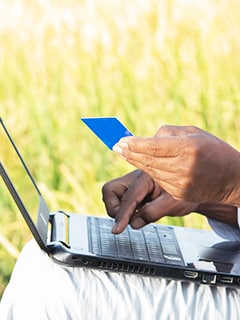CKYC Registry
-
Customer Service Contact us Service request Locate a branch
Find all the help you need
Scan the QR, get our app, and find help on your fingertips

Help CenterSupport topics, Contact us, FAQs and more
-
Login
Are you ready for an upgrade?
Login to the new experience with best features and services
-
Login
Are you ready for an upgrade?
Login to the new experience with best features and services
- Accounts
-
Deposits
IDFC FIRST Bank Deposits
View all Deposits -
Loans
IDFC FIRST Bank Loans
View all Loans - Wealth & Insure
-
Payments
IDFC FIRST Bank Payments
View all Payments -
Cards
IDFC FIRST Bank Cards
View all Cards - Blogs
- Corporate Account
-
Cash Management Services
IDFC FIRST Bank Cash Management Services
View all Cash Management Services - Supply Chain Finance
-
Corporate Lending
IDFC FIRST Bank Lending
View all -
Treasury
IDFC FIRST Bank Treasury
See more details - NBFC Financing
Support topics, Contact us, FAQs and more
- IDFC FIRST Bank Accounts
-
Savings Account
-
Corporate Salary
Account -
Senior Citizens
Savings Account -
First Power
Account -
Current Account
-
NRI Savings
Account -
TASC Institutional
Account -
Savings Account
Interest Calculator
- IDFC FIRST Bank Deposits
-
Fixed Deposit
-
Recurring Deposit
-
NRI Fixed Deposit
-
Safe Deposit Locker
-
FD Calculator
-
RD Calculator
- IDFC FIRST Bank Loans
-
Personal Loan
-
Consumer Durable
Loan -
Home Loan
-
Business Loan
-
Professional Loan
-
Education Loan
-
New Car Loan
-
Pre-owned Car Loan
-
Two Wheeler Loan
-
Pre-owned Two
Wheeler Loan -
Commercial Vehicle
Loan -
Gold Loan
-
Loan Against Property
-
Loan Against Securities
-
Easy Buy EMI card
-
Personal Loan
EMI Calculator -
Education Loan
EMI Calculator -
Home Loan
EMI Calculator
- IDFC FIRST Bank Wealth & Insure
-
FIRST Select
-
FIRST Wealth
-
FIRST Private
-
Mutual Funds
-
Sovereign Gold Bond
-
Demat Account
-
Term Insurance
-
Life Insurance
-
Health Insurance
-
General Insurance
-
Bonds
-
Loan Against
Securities -
Portfolio Management
Service
- IDFC FIRST Bank Payments
-
FASTag
-
Credit Card
Bill Payments -
UPI
-
Funds Transfer
-
Forex Services
-
Pay Loan EMI
- IDFC FIRST Bank Cards
-
Ashva :
Metal Credit Card -
Mayura :
Metal Credit Card -
FIRST Millennia
Credit Card -
FIRST Classic
Credit Card -
FIRST Select
Credit Card -
FIRST Wealth
Credit Card -
FIRST WOW!
Credit Card -
Deals
-
Debit Cards
-
Co-branded Cards
-
Credit Card
EMI Calculator -
FIRST Corporate
Credit Card -
FIRST Purchase
Credit Card -
FIRST Business
Credit Card
- Premium Metal Credit Cards
-
AshvaLifestyle1% Forex₹2,999
-
MayuraLifestyleZero Forex₹5,999
-
FIRST PrivateInvite Only
- Best for travellers
-
MayuraZero ForexMetal₹5,999
-
Ashva1% ForexMetal₹2,999
-
FIRST WOW!Zero ForexTravelLifetime Free
-
FIRST SWYPTravel OffersEMI₹499
-
FIRST Select1.99% ForexLifestyleLifetime Free
-
FIRST Wealth1.5% ForexLifestyleLifetime Free
-
Club VistaraTravelLifestyle₹4,999
-
IndiGo IDFC FIRST Dual Credit CardTravelLifestyle₹4,999
- Max benefits, Free for life
-
FIRST Classic10X RewardsShoppingNever Expiring Rewards
-
FIRST Millennia10X RewardsShoppingNever Expiring Rewards
-
FIRST Select10X RewardsLifestyle1.99% Forex
-
FIRST Wealth10X RewardsLifestyle1.5% Forex
-
FIRST WOW!RewardsTravelZero Forex
-
LIC ClassicRewardsInsuranceShopping
-
LIC SelectRewardsInsuranceShopping
- Reward Multipliers
-
AshvaLifestyleMetal₹2,999
-
MayuraLifestyleZero Forex₹5,999
-
FIRST ClassicNever Expiring RewardsShoppingLifetime Free
-
FIRST MillenniaNever Expiring RewardsShoppingLifetime Free
-
FIRST SelectNever Expiring RewardsLifestyleLifetime Free
-
FIRST WealthNever Expiring RewardsLifestyleLifetime Free
- Rewards & Credit on UPI
-
FIRST Power+FuelUPI₹499
-
FIRST PowerFuelUPI₹199
-
FIRST EA₹NVirtual1% Cashback₹499
-
FIRST DigitalVirtualUPI₹199
-
IndiGo IDFC FIRST Dual Credit CardUPITravelDual cards
- Fuel and Savings
-
FIRST PowerRewardsUPI₹199
-
FIRST Power+RewardsUPI₹499
-
LIC ClassicRewardsInsuranceShopping
-
LIC SelectRewardsInsuranceShopping
- Express and Flaunt
-
AshvaMetal1% Forex₹2,999
-
MayuraMetalZero Forex₹5,999
-
FIRST SWYPEMIOfferMAX₹499
-
FIRST MillenniaRewardsShoppingLifetime Free
- FD Backed rewarding Credit Cards for all
-
FIRST EA₹NVirtualCashback₹499
-
FIRST WOW!Zero ForexTravelLifetime Free
-
CreditPro Balance TransferTransfer & SaveReduce InterestPay Smartly
- IDFC FIRST Bank NRI Forex Solutions
-
Send money to India-Wire transfer
-
Send money to India-Digitally
-
Send money abroad
-
Max Returns FD (INR)
- IDFC FIRST Bank MSME Accounts
-
Platinum Current
Account -
Gold
Current Account -
Silver Plus
Current Account -
Merchant Multiplier
Account -
Agri Multiplier
Account -
TASC Institutional
Account -
Dynamic Current
Account -
World business
Account -
First Startup
Current Account
- IDFC FIRST Bank Business Loans
-
Business Loan
-
Professional Loan
-
Loan Against Property
-
Business Loan for Women
-
Working Capital Loan
-
Construction Equipment Loan
-
Machinery Loan
-
Healthcare Equipment Loan
- IDFC FIRST Bank Business Solutions
-
Payment Solutions
-
Tax Payments
-
Doorstep Banking
-
Point of Sale (POS)
-
Escrow Accounts
-
NACH
-
Payment Gateway
-
UPI
-
Virtual Accounts
-
As per amendment in the Income Tax Rules, PAN or Aadhaar are to be mandatorily quoted for cash deposit or withdrawal aggregating to Rupees twenty lakhs or more in a FY. Please update your PAN or Aadhaar. Kindly reach out to the Bank’s contact center on 1800 10 888 or visit the nearest IDFC FIRST Bank branch for further queries.
-
-
Most Searched
Sorry!
We couldn’t find ‘’ in our website
Here is what you can do :
- Try checking the spelling and search
- Search from below suggestions instead
- Widen your search & try a more generic keyword
Suggested
Get a Credit Card
Enjoy Zero Charges on All Commonly Used Savings Account Services
Open Account Now
What is outstanding amount in Credit Card
Key Takeaways
An outstanding amount is the unpaid balance on your credit card after your monthly payments.
Outstanding, current, and statement balances each serve different purposes and have distinct implications.
A high outstanding balance can negatively affect your credit score.
Interest charges apply to outstanding amounts if not paid in full within the due date.
Introduction: About credit card expenses and balance
Credit cards have become an integral part of personal finance, providing access to credit for a range of expenses, from daily purchases to larger financial commitments. They offer benefits like reward points, cashback offers, and special discounts. However, the convenience of credit cards comes with the responsibility to manage expenses carefully to avoid debt accumulation. One of the most critical aspects of credit card management is understanding your balance.
Your credit card balance can be confusing due to the different terms used, such as "current balance," "statement balance," and "outstanding amount." Each of these terms reflects a different aspect of your credit usage and repayment cycle. Knowing the differences can help you manage your finances better and avoid penalties, interest charges, and damage to your credit score.
What is the outstanding amount on a credit card?
The outstanding amount on a credit card refers to the total sum of money you owe to the bank or financial institution at any given time. This amount includes any unpaid purchases, fees, interest charges, and other transactions that have not yet been paid off.
It is essentially the total of all transactions made using your credit card, minus any payments you have already made. The outstanding amount continues to increase with new transactions or accrues interest if not paid by the due date. Paying off the outstanding amount on or before the due date helps you avoid interest charges and late fees, thereby maintaining a healthy credit score and financial discipline.
Outstanding balance vs current balance vs statement balance
Understanding the differences between the outstanding balance, current balance, and statement balance is crucial for managing your credit card expenses effectively. Each of these balances reflects a different state of your credit card usage and has distinct implications.
1. Outstanding balance: The outstanding balance is the total amount you owe on your credit card at any point in time, including any new purchases, fees, or interest charges that have not been paid. This balance can change daily as new transactions are made or payments are posted. It represents the immediate financial obligation you have to the bank and impacts interest calculations.
2. Current balance: The current balance includes all charges and payments made on your card, including any transactions since your last statement. It updates in real time, reflecting all ongoing transactions. This balance gives you the most recent picture of your total debt but is not the amount due immediately.
3. Statement balance: The statement balance is the amount you owed at the end of the last billing cycle, which is the total of all transactions and charges within that period. It remains constant throughout the billing period until the next statement is generated. This is the amount you need to pay by the due date to avoid interest charges on new purchases.
Aspect |
Outstanding Balance |
Current Balance |
Statement Balance |
Definition |
Total amount owed including recent transactions and fees |
Total of all charges and payments, real-time |
Amount owed at the end of the last billing cycle |
Updates |
Daily, with every new transaction or payment |
Real-time |
Monthly, at the end of each billing cycle |
Relevance |
Immediate obligation and impacts interest calculation |
Latest picture of total debt |
Must be paid by due date to avoid interest |
What is an average outstanding balance?
The average outstanding balance refers to the average amount of debt carried over from month to month on a credit card. It is calculated by adding all outstanding balances for each day of the billing period and dividing by the number of days in that period. A lower average outstanding balance is generally preferred as it indicates good credit management, reduces interest payments, and positively impacts your credit score.
Maintaining a low average outstanding balance ensures that you do not fall into a debt trap and can manage your finances without accruing high-interest charges. It also reflects your financial discipline and ability to pay off dues promptly.
Companies that issue credit cards assign specific credit limits (spending limits) on your cards. The outstanding amount on your credit card helps determine how much credit (money left to spend) you have available. Subtract your outstanding credit card balance from your credit limit to find how much you can spend.
Interest on the outstanding credit card balance
Interest on the outstanding credit card balance is charged when you do not pay the full amount due by the statement due date. This interest is typically calculated daily on the remaining balance from the date of each transaction until the outstanding amount is paid in full.
Credit card interest rates can be quite high, often ranging up to 48% per annum, depending on the terms set by the bank. The longer you carry forward an outstanding balance, the more interest you accumulate, which can significantly increase your debt. Therefore, it is advisable to pay off the outstanding balance as quickly as possible to avoid the accumulation of interest and fees.
Assume you have a ₹7,000 monthly balance. If you pay 15% interest, your monthly payment will be ₹87.50 and ₹1,050 per year. Most of this interest expenditure can be avoided by paying off the outstanding amount each month. IDFC FIRST Bank credit cards have a grace period or interest-free period extending up to 50 days. You will not incur any interest if you settle the outstanding debt within this period every billing cycle.
Additionally, you can opt for a credit card like FIRST WOW! credit card that offers interest rates starting as low as 9% APR for an affordable interest payment and is secured with a fixed deposit. It helps you avoid any debt accumulation since the FD acts as a collateral. The FIRST WOW! credit card from IDFC FIRST Bank is a card for everyone which can be obtained without salary or credit check and comes with extensive benefits ranging from shopping to travel privileges.
Should you pay the outstanding balance and how much?
Yes, you should aim to pay the outstanding balance in full, or as much of it as possible, every month. Paying off the full outstanding balance ensures that you avoid interest charges and maintain a healthy credit score. If paying the full amount is not feasible, you should at least pay the minimum amount due, as specified in your credit card statement, to avoid late payment fees and damage to your credit score.
Ideally, you should make more than the minimum payment each month to reduce your debt faster and minimise interest charges. Regularly paying more than the minimum amount will help you maintain a good credit rating and avoid the snowball effect of accumulating debt.
How credit card outstanding amount can affect credit score
The outstanding amount on your credit card can significantly impact your credit score. A high outstanding balance indicates a higher credit utilisation ratio, which is the ratio of your credit card debt to your total credit limit. A credit utilisation ratio above 30% can negatively affect your credit score as it suggests that you are heavily reliant on credit.
Additionally, if you consistently carry forward a high outstanding balance and miss payments, it can lead to a drop in your credit score. Regularly clearing your outstanding balance and keeping your credit utilisation low demonstrates responsible credit behaviour, which positively influences your credit score.
Conclusion
A credit card can be a true asset if you know how to use it. Having the right card is equally important, as it can help you earn cashback, which reduces your liability. Explore various credit card options from IDFC FIRST Bank and make your shopping experience more rewarding. The interest rates applicable on the cards are some of the most affordable in the industry. You can also use the different EMI options to save more with the IDFC FIRST Bank FIRST SWYP credit card that only levies a fixed monthly conversion fee on converting your purchases to EMI (eligible purchases), and comes with no interest charges, making it one of most affordable cards in the market.
Disclaimer
The contents of this article/infographic/picture/video are meant solely for information purposes. The contents are generic in nature and for informational purposes only. It is not a substitute for specific advice in your own circumstances. The information is subject to updation, completion, revision, verification and amendment and the same may change materially. The information is not intended for distribution or use by any person in any jurisdiction where such distribution or use would be contrary to law or regulation or would subject IDFC FIRST Bank or its affiliates to any licensing or registration requirements. IDFC FIRST Bank shall not be responsible for any direct/indirect loss or liability incurred by the reader for taking any financial decisions based on the contents and information mentioned. Please consult your financial advisor before making any financial decision.
The features, benefits and offers mentioned in the article are applicable as on the day of publication of this blog and is subject to change without notice. The contents herein are also subject to other product specific terms and conditions and any third party terms and conditions, as applicable. Please refer our website www.idfcfirstbank.com for latest updates.
Our Credit Cards
IndiGo IDFC FIRST Dual Credit Cards
Earn IndiGo BluChips | Redeem on IndiGo flights | Power of Dual cards | 1.49% Forex Mark Up
Mayura Credit Card
Lounge access, 10X Reward, ₹4000 cashback, Zero Forex, Spa, Golf access
FIRST Power Credit Card
Fuel Card, 5% fuel savings, 2.5% Grocery & Utility Savings, 0 interest cash
FIRST Select Credit Card
Zero Annual Fee, Complimentary airport lounge access, Low forex mark-up at 1.99%, Buy-1-Get-1 Movie ticket offers
Related Products
Related Articles
Download IDFC FIRST Bank App
-
IndiGo IDFC FIRST Dual Credit Cards
Earn IndiGo BluChips | Redeem on IndiGo flights | Power of Dual cards | 1.49% Forex Mark Up
Know More -
FIRST Classic Credit Card
No Annual Fee, 25% Off on movie tickets, 24/7 Roadside assistance, 1% Fuel Surcharge waiver
Know More





























